Yoga Poses For Stress Relief
 Relaxation is difficult to achieve. The needs of your family, your boss’s orders, and even traffic jams can be stressful. Exercise helps burn off the hormones of stress. Yoga can help reduce anxiety, increase energy, and help you learn how to focus. You may not even need a pose for stress reduction if you learn yoga breathing techniques. They can slow your heart rate and calm your body. Focus on breathing. Slowly inhaling through the nose and exhaling through the mouth helps in stressful times.
Relaxation is difficult to achieve. The needs of your family, your boss’s orders, and even traffic jams can be stressful. Exercise helps burn off the hormones of stress. Yoga can help reduce anxiety, increase energy, and help you learn how to focus. You may not even need a pose for stress reduction if you learn yoga breathing techniques. They can slow your heart rate and calm your body. Focus on breathing. Slowly inhaling through the nose and exhaling through the mouth helps in stressful times.
A child pose relaxes your muscles and brings quick relief from stress.
A child pose is easy to do. Get on the floor on your hands and knees. As you slowly exhale, rock backward, lowering your hips until your buttocks touch your heels and your chest is on top of your thighs. Your hands will remain firmly planted, with your arms outstretched, and your forehead touching the floor. Hold the position for a minute or two.
Relax with the cobra pose.
You’ll eliminate stress quickly when you use the cobra pose. Start on your stomach with your hands beneath your shoulders and your elbows close to the body. Press your lower body down, spreading your toes as you press your feet. Lift your head as you exhale, keeping your lower ribs on the floor. Push your shoulders back, pushing your chest forward. Straighten your arms as you lift your chest off the floor, pressing down on your thighs. Push your shoulder blades together, holding for 30 seconds then lower your body slowly.
You’ll reduce back pain as you relax using the cat/cow combination of poses.
The combination of poses reduces back pain and stress. Start on all fours with your palms and knees on the floor. For the cow position, lift your head as you allow your belly to drop, creating a valley between your shoulders and rump. Hold for a few seconds. Return to the starting position. Drop your head for the cat position and arch your back. Hold as you breathe deeply. Return to the neutral position.
- In a sitting position, lift your arms above your head with your palms up. Interlock your fingers. Push your palms toward the sky and lean slowly to the left as you inhale. Hold for a count of 10 and return to the starting position as you inhale.
- The uttanasana is a standing, forward bend that helps you relax. Exhale slowly as you bend forward, trying to touch your fingers to the floor and press your head against your thighs. Bend as far as you can without stress. Hold for 8 breaths.
- A bridge can build core muscles and help you relax. Lay on your back with your knees bent and feet flat on the floor. Inhale as you lift your hips and trunk off the floor to create a straight line from your head to your knees.
- Get instant relaxation at your desk. Sitting on the edge of your chair with your feet flat on the floor and spine straight, reach backward, grabbing the back of the chair. Lift your chest as you pull your shoulder blades back as you inhale. Breathe deeply and return to the starting position.
For more information, contact us today at Wellness On A Dime Coaching


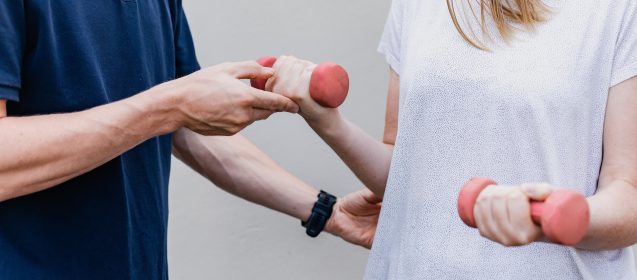
 You don’t have to live in Louisiana to know that strength training is beneficial for both men and women. In the past, women often omitted it from their workout, fearing they’d end up looking like the Hulk. Hormones make that difficult to do. Unless you workout daily for hours with a specialized workout, take specific supplements, and follow strict dietary rules, you won’t end up looking like a female bodybuilder. What strength-building exercises can do for you is ease menopause, build stronger bones, give you a curvy look with toned muscles, and slow the aging process.
You don’t have to live in Louisiana to know that strength training is beneficial for both men and women. In the past, women often omitted it from their workout, fearing they’d end up looking like the Hulk. Hormones make that difficult to do. Unless you workout daily for hours with a specialized workout, take specific supplements, and follow strict dietary rules, you won’t end up looking like a female bodybuilder. What strength-building exercises can do for you is ease menopause, build stronger bones, give you a curvy look with toned muscles, and slow the aging process.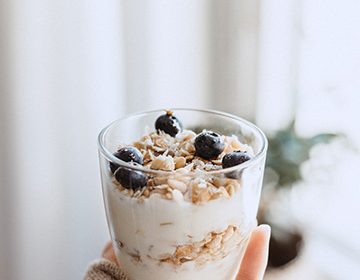
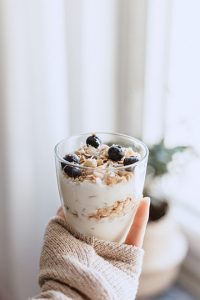 What you eat after a workout does make a difference. You need the right type of fuel to build muscles and improve recovery. Your body needs to replenish glycogen stores that you depleted. It requires amino acids for muscle repair and building new tissue. If you had an intense workout you also need to replenish your fluid and electrolytes. Healthy post-workout snacks fill those needs and fill the void in your stomach so you won’t be tempted by every sweet treat you see.
What you eat after a workout does make a difference. You need the right type of fuel to build muscles and improve recovery. Your body needs to replenish glycogen stores that you depleted. It requires amino acids for muscle repair and building new tissue. If you had an intense workout you also need to replenish your fluid and electrolytes. Healthy post-workout snacks fill those needs and fill the void in your stomach so you won’t be tempted by every sweet treat you see.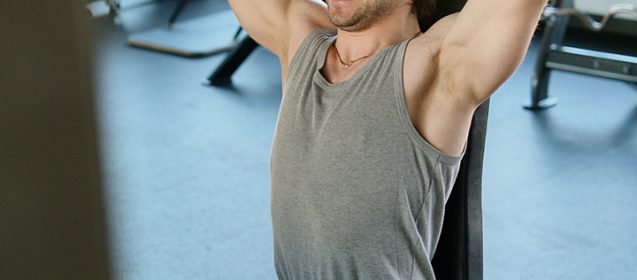
 Just as there are exercises for strength, flexibility, balance, and cardiovascular health. Some exercises build endurance. Endurance is normally thought of as a cardiovascular trait. It’s the ability to run up and down stairs without getting winded. It builds up the ability of the lungs and heart to provide oxygen for the body. Endurance is more than that. It’s also the ability to work other muscles hard for an extended period. You need both types of endurance to be truly fit. Some exercises are better than others at meeting that goal.
Just as there are exercises for strength, flexibility, balance, and cardiovascular health. Some exercises build endurance. Endurance is normally thought of as a cardiovascular trait. It’s the ability to run up and down stairs without getting winded. It builds up the ability of the lungs and heart to provide oxygen for the body. Endurance is more than that. It’s also the ability to work other muscles hard for an extended period. You need both types of endurance to be truly fit. Some exercises are better than others at meeting that goal.
 If you struggle to make the time for your workout because of job and family responsibilities, it’s easy to make time for both. You can do fun fit activities with your kids that everyone will enjoy. Kids learn what they live. If you’re putting them on a path to fitness, you’re helping them to become healthy adults. Being active together helps improve their cognitive abilities and creates memories that will last forever. These activities also benefit you and reduce the boredom of doing the same workout continuously. It’s a win-win for everyone.
If you struggle to make the time for your workout because of job and family responsibilities, it’s easy to make time for both. You can do fun fit activities with your kids that everyone will enjoy. Kids learn what they live. If you’re putting them on a path to fitness, you’re helping them to become healthy adults. Being active together helps improve their cognitive abilities and creates memories that will last forever. These activities also benefit you and reduce the boredom of doing the same workout continuously. It’s a win-win for everyone.
 You’ve probably heard you shouldn’t eat just before bed, especially if it’s a big meal. That’s true for several reasons, but there’s one way it can be helpful. Humans still have many instincts from their cave-dwelling days. One of them is to stay awake to hunt for food if they’re hungry. Sometimes, an empty stomach won’t allow sleep and lack of sleep can make you hungrier. If you’re one of those people who can’t sleep without a snack, plan ahead. Eat less at the other two meals and more at your last meal of the day or be prepared with sleep-inducing snacks.
You’ve probably heard you shouldn’t eat just before bed, especially if it’s a big meal. That’s true for several reasons, but there’s one way it can be helpful. Humans still have many instincts from their cave-dwelling days. One of them is to stay awake to hunt for food if they’re hungry. Sometimes, an empty stomach won’t allow sleep and lack of sleep can make you hungrier. If you’re one of those people who can’t sleep without a snack, plan ahead. Eat less at the other two meals and more at your last meal of the day or be prepared with sleep-inducing snacks.
 There are many causes of depression. Some are severe and require clinical intervention. Others are mild, such as waking up to an overcast day. Depression caused by losing a job or a broken relationship may be more serious, but just like mild depression, exercise helps. No matter what the cause, exercise can help reduce depression. Therapists use exercise as an adjunct therapy. If depression occurs because of a broken relationship, exercise can do double duty. It can help you feel better and look fabulous, too. There’s no better revenge than making yourself look better.
There are many causes of depression. Some are severe and require clinical intervention. Others are mild, such as waking up to an overcast day. Depression caused by losing a job or a broken relationship may be more serious, but just like mild depression, exercise helps. No matter what the cause, exercise can help reduce depression. Therapists use exercise as an adjunct therapy. If depression occurs because of a broken relationship, exercise can do double duty. It can help you feel better and look fabulous, too. There’s no better revenge than making yourself look better.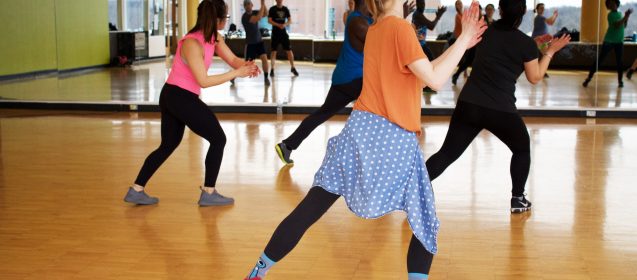
 If you get bored doing all those squats and lunges, it’s time to have fun while you exercise. The more you enjoy an activity, the more you’ll tend to do it. That’s why many people in Louisiana choose a dance class as one of their fitness activities. Ballerinas and jazz dancers do grueling workouts that require balance, flexibility, strength, and endurance. You don’t have to do the latest dances to get plenty of exercise. You don’t have to do the latest dances to get plenty of exercise. You can take ballroom dancing and learn the classic steps, learn ballet, or go country with some line dancing.
If you get bored doing all those squats and lunges, it’s time to have fun while you exercise. The more you enjoy an activity, the more you’ll tend to do it. That’s why many people in Louisiana choose a dance class as one of their fitness activities. Ballerinas and jazz dancers do grueling workouts that require balance, flexibility, strength, and endurance. You don’t have to do the latest dances to get plenty of exercise. You don’t have to do the latest dances to get plenty of exercise. You can take ballroom dancing and learn the classic steps, learn ballet, or go country with some line dancing.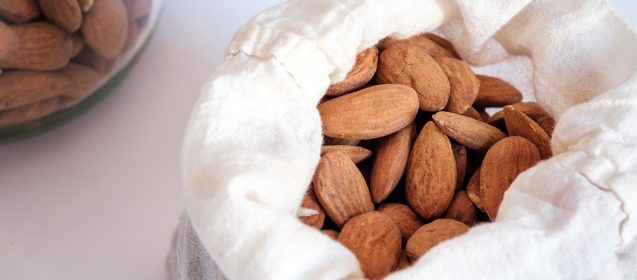
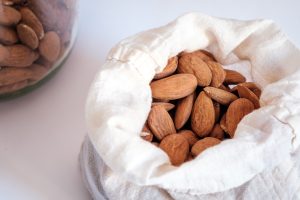 It doesn’t matter whether you work in an office, in a factory, or at a building site, it’s difficult to keep healthy snacks that keep you full until your next meal. You can avoid the mid-morning or mid-afternoon slump by avoiding the vending machine and taking your own. It should contain protein, fat, or fiber. A handful of M&Ms may satisfy you for a few minutes, but that feeling of energy quickly wears off, leaving you even more exhausted. That’s because candy is full of sugar. Sugar spikes your glucose level and just as quickly drops it even lower.
It doesn’t matter whether you work in an office, in a factory, or at a building site, it’s difficult to keep healthy snacks that keep you full until your next meal. You can avoid the mid-morning or mid-afternoon slump by avoiding the vending machine and taking your own. It should contain protein, fat, or fiber. A handful of M&Ms may satisfy you for a few minutes, but that feeling of energy quickly wears off, leaving you even more exhausted. That’s because candy is full of sugar. Sugar spikes your glucose level and just as quickly drops it even lower.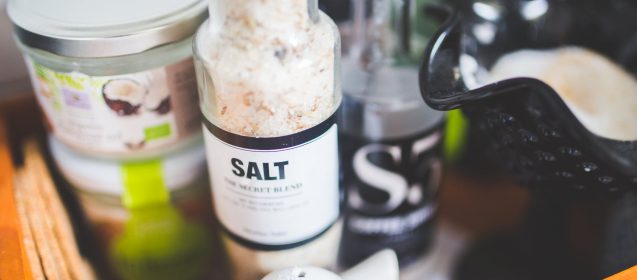
 If you’ve ever gone heavy on the salt shaker at dinner, only to wake up looking like the Stay-Puff Marshmallow Man, you know that salt can cause water-weight gain, edema, and bloating. It does interfere with weight loss, but it’s only a temporary setback until the sodium flushes out of your body. Salt plays a role in permanent weight gain.
If you’ve ever gone heavy on the salt shaker at dinner, only to wake up looking like the Stay-Puff Marshmallow Man, you know that salt can cause water-weight gain, edema, and bloating. It does interfere with weight loss, but it’s only a temporary setback until the sodium flushes out of your body. Salt plays a role in permanent weight gain.